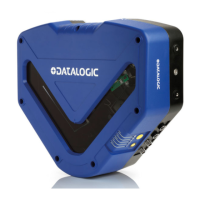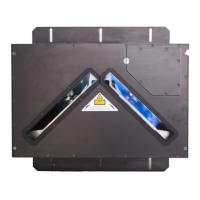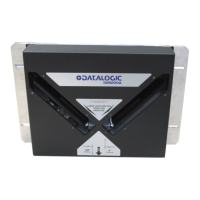User Interface
90
DX8210 Barcode Scanner
If Code 128 and Code30 are not read – if i2of5 is read, it goes in the field.
Priority Filter Group List
Enter the Group List in the field provided. This field defines the specific Logical
Combination groups to which the Priority Filter will apply. The groups are
numbered according to the order in which they are listed (from left to right) in the
Logical Combination Rule parameter.
Format: Group Number(s) separated by the comma character
Example:
1,3 means the Priority Filter is applied to Logical Groups 1 and 3. Logical Group 2
will not have the Priority Filter applied, however it will follow the normal rules of
code analysis, and if selected, the Strip Filter parameters will apply.
Priority Filter Type
Select Normal or Advanced from the drop-down list.
Description:
Normal: Uses the Logical Combination Rule string to define the priority
Advanced: Uses the Priority Filter Advanced String to define the priority. Advanced
type allows the priority filter to essentially take "priority" over the Logical
Combination Rule string.
NORMAL
When the Priority Filter Type is set to Normal, the operators used in the Logical
Combination Rule string have the following meaning:
& = AND operator which separates a group from the previous/following one;
^ = The priority is given to the code label indicated to the left of the operator. If
this code is read, the group is in Good Read independent from any other code in
the same group.
Example:
Logical Combination Rule = 1^2&5^3^4&6^7 (3 groups)
Results Without Priority Filter:
Group 1 - read either code 1 or 2 = Good Read; read both code 1 and 2 = Multiple
Read
Group 2 - read either code 5 or 3 or 4 = Good Read; read any combination =
Multiple Read
Group 3 - read either code 6 or 7 = Good Read; read both code 6 and 7 = Multiple
Read
Results With Priority Filter:
Filter Enabled on Groups = 1,2
Group 1 - read code 1 = Good Read independent from reading code 2
Group 2 - read code 5 = Good Read independent from reading code 3 or 4; read
code 3 = Good Read independent from reading code 4
Group 3 - read either code 6 or 7 = Good Read; read both code 6 and 7 = Multiple
Read
ADVANCED
When the Priority Filter Type is set to Advanced, the Priority Filter Advanced String
applies to the Logical Combination Groups. This string must correspond to the
order of the groups defined in the Logical Combination Rule string.
The following operators can be used:
& = Code group separator. This operator separates a group from the
previous/following one;
^ = The priority is given to the code label indicated to the left of this
operator. If this code is read, the group is in Good Read independent from
any other code in the same group.
| = Equal priority operator (vertical line). Codes separated by this operator
have the same priority and if both codes are read a Multiple Read will result.
The only difference from the implicit pattern string of the Normal (default) case
when the Logical Combination Rule string is used, is the Equal Priority operator.
Example:
Logical Combination Rule = 1^2&5^3^4&8^6^7 (3 groups)

